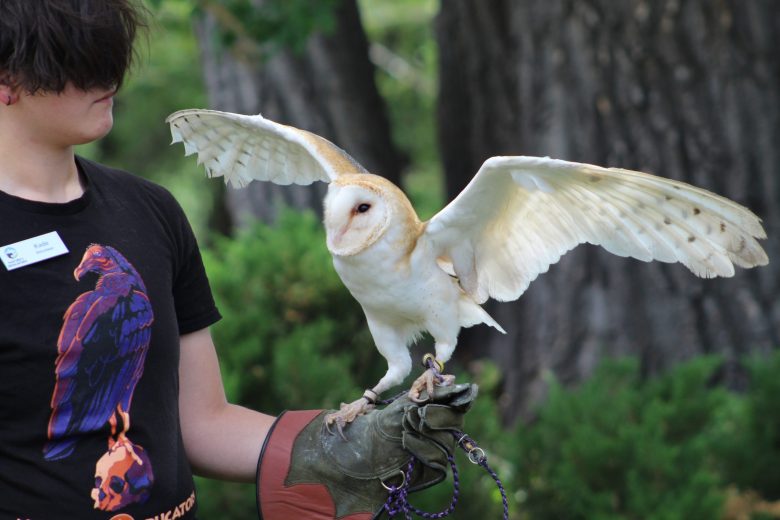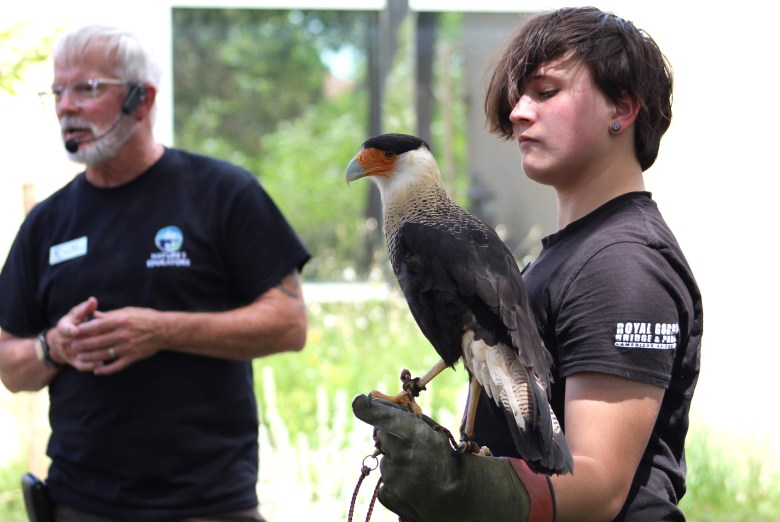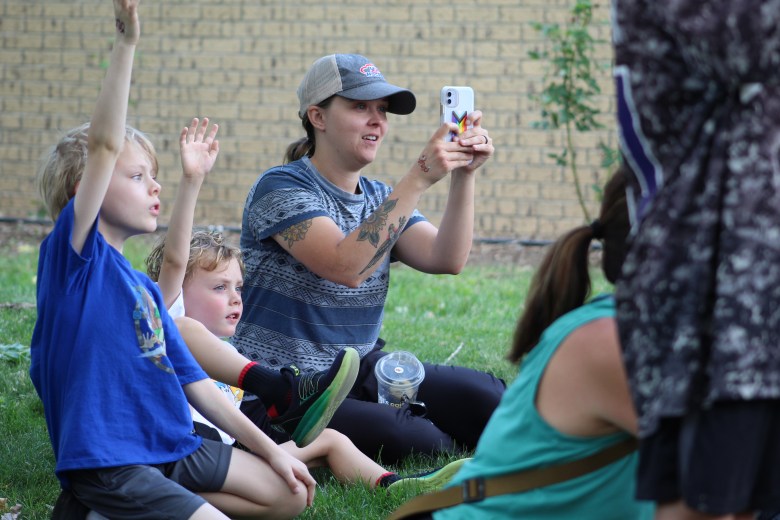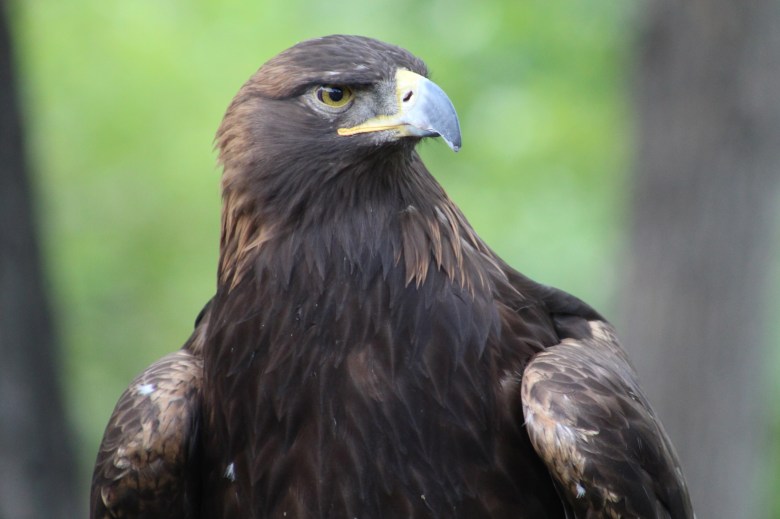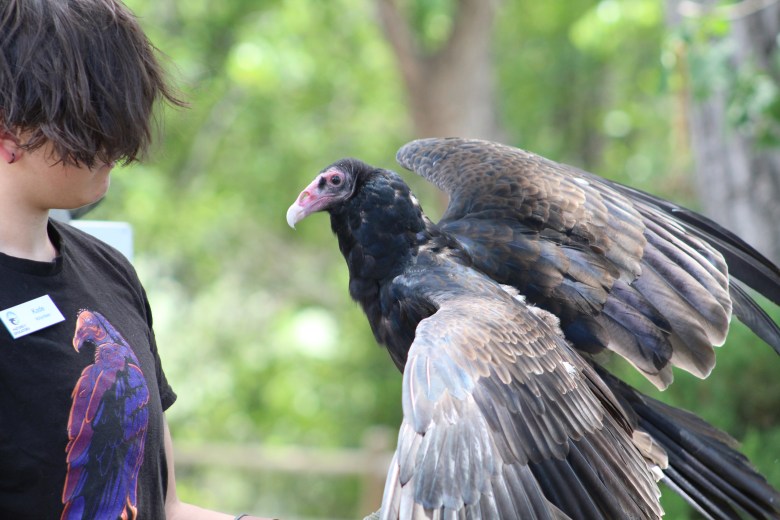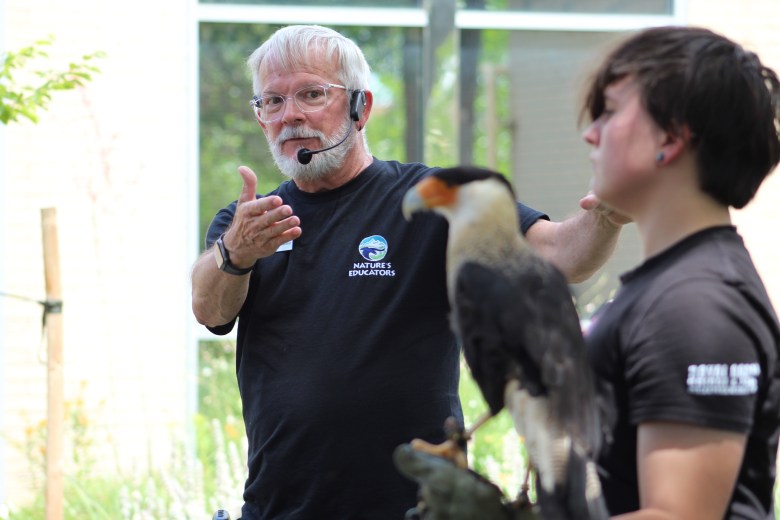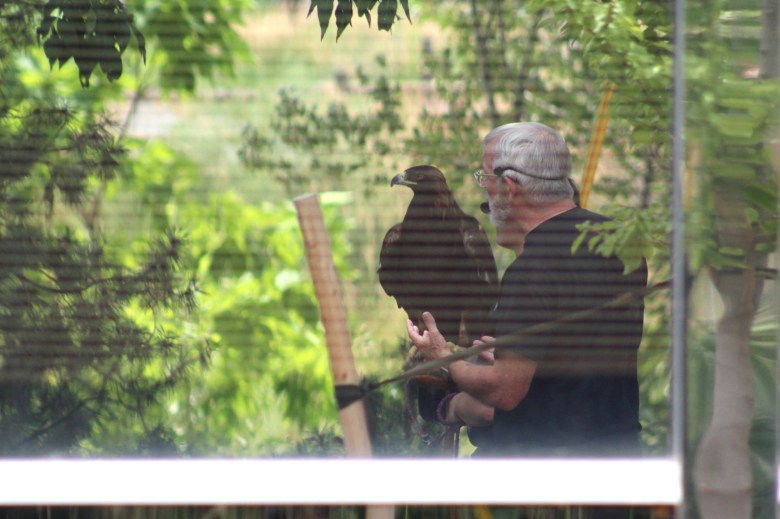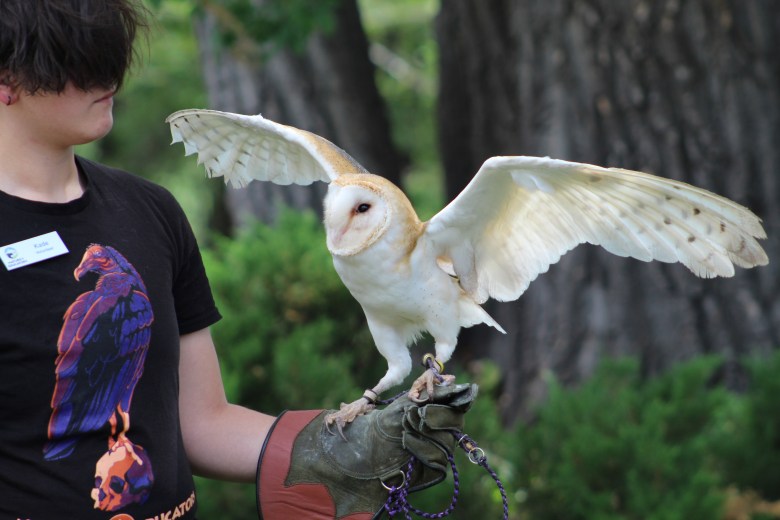Raptors have some of the most dangerous attributes in the animal kingdom.
Falcons can see a mouse’s whiskers across a football field.
Owls can fly without making a sound.
Golden eagles only weigh about 15 pounds, but they can hunt animals as large as deer, thanks to their immensely powerful and sharp talons.
On July 15, four types of raptors and their human caretakers revealed these attributes during the Golden Library’s Talon Talk.
Nature’s Educators hosted Talon Talk at multiple library branches throughout the week, as part of the Jeffco Public Library’s summer reading challenge.
Because a large crowd was expected, Golden Library staff moved the event to the courtyard behind City Hall. About 65 people attended, including some passersby who saw the raptors from the Clear Creek Trail and wanted to learn more about them.
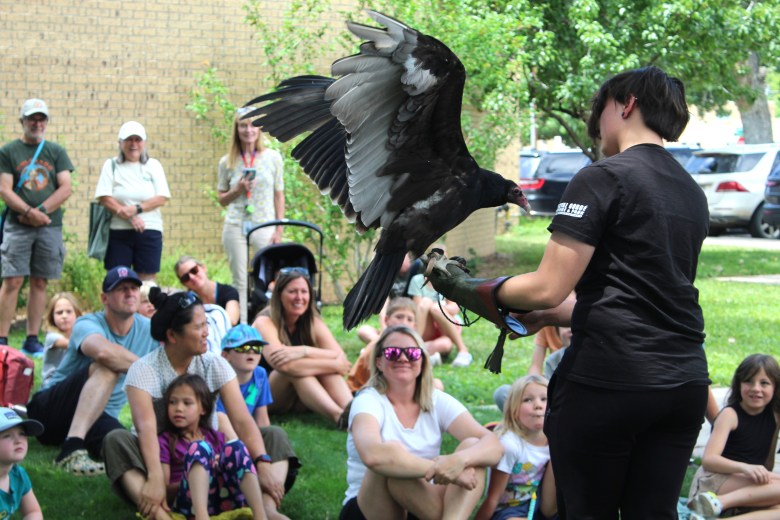
Nature’s Educators, a nonprofit based in Florence, Colorado, is an educational wildlife program licensed by county, state, and federal agencies to care for non-releasable birds of prey, mammals, and herptiles for educational programs.
For instance, the four raptors at the July 15 Talon Talk had sustained major injuries or had been raised in captivity, Nature’s Educators program specialist Alex Olow explained.
Olow recommended that people do what they can to protect and promote raptors and other birds in their neighborhoods. He suggested building birdboxes that songbirds and even small raptors like kestrels can make a home in.
He also advised against letting housecats outside unsupervised, as they kill millions of birds every year, and against throwing food on the side of the road, as it attracts critters and subsequently attracts birds of prey.
Four feathery friends
Raptors are birds of prey characterized by their powerful eyesight and strong talons, he continued. Each species of raptor has its own unique characteristics, which Olow shared as volunteer Kade Rodenbeck presented a different raptor to the crowd.
The first one was a barn owl named Comet.
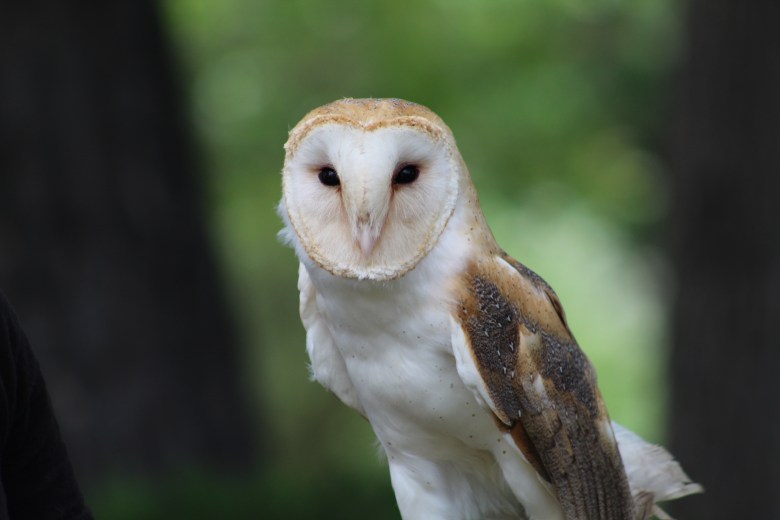
Barn owls can be found on every continent except Antarctica, Olow said. They have asymmetrical ears, giving them the best hearing of any animal. They can turn their heads 270 degrees, and their aerodynamic feathers allow for completely silent flight.
Barn owls are excellent pest control, as they can eat four mice a day. However, because of that, they’re at risk of consuming rodenticide, Olow said.
Barn owls are among the 13 owl species native to Colorado, but they’re typically not seen much in urban areas.
The second raptor to make its Golden debut was Salvador the crested caracara.
The crested caracara is sometimes called the Mexican eagle, Olow said, despite not being an eagle. It shares some attributes with hawks and vultures, but the crested caracara is actually a type of falcon.
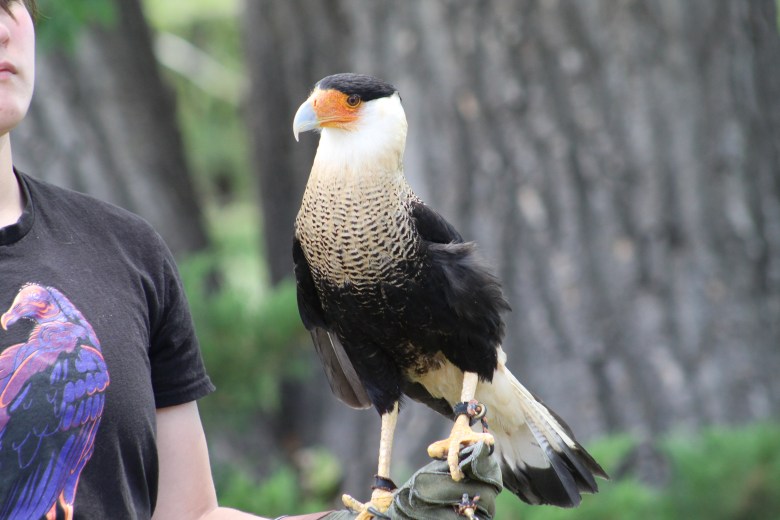
Salvador was hit by a car and had to have his wing amputated, Olow explained. Because of that, he has balance issues.
Crested caracaras are opportunistic hunters and often hunt on foot. They will eat carcasses and food in other birds’ nests, as well as live prey like insects, fish, small birds, rodents and more.
Next up was Sashimi, the turkey vulture.
Sashimi was found abandoned in a box. Olow said Nature’s Educators believe someone tried to keep Sashimi as a pet, found out that was illegal, and so abandoned him.
Turkey vultures are so called because of their turkey-like feet and red faces, but unlike actual turkeys. They are migratory, Olow said, and frequent Colorado between April and October.
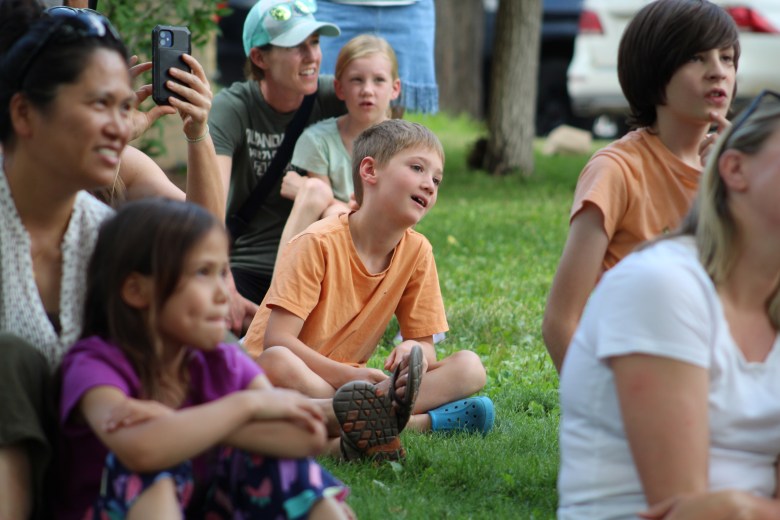
Finally, Nature’s Educators saved the biggest raptor for last, as Gaia the golden eagle made her Golden debut.
Golden eagles are actually bigger than bald eagles, Olow explained. Gaia weighs 10 pounds with a 7-foot wingspan.
Like Salvador, Gaia was hit by a car, detaching a retina in her left eye. While she might be able to survive in the wild with such an injury, her caretakers tested her by releasing prey for her to catch. Gaia saw the prey well enough to attack it, but not well enough to kill it. So, she remains under human care.
Olow was unsure of Gaia’s age, saying she’s was an adult when she was found and has been in human care for eight years. Thus, she could be as old as 12. In the wild, golden eagles can live up to 30 years, but they can live longer in captivity.
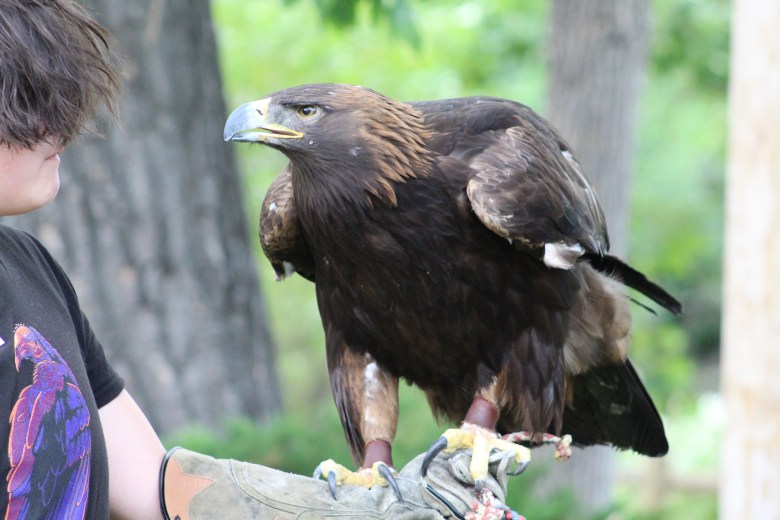
Golden eagles are apex predators. They’ve been known to attack wolves, bighorn sheep and other large animals, with Olow saying of eagles like Gaia, “She will eat anything she can catch.”
Golden eagles are sometimes called serpentine eagles because they frequently hunt snakes. In fact, the Mexican flag depicts a golden eagle eating a snake, and the golden eagle is the national bird of Mexico and four other countries.
Color your world
Nature’s Educators has done other programs for the Jeffco Public Library branches before, as well as other library systems, cities and other entities along the Front Range.
For more information about natureseducators.org.
The Jeffco Public Library branches will be hosting other events as part of its Color Your World summer reading challenge, which runs through July 31.
For more information, visit jeffcolibrary.org.
Click through additional photos from the July 15 Talon Talk:


